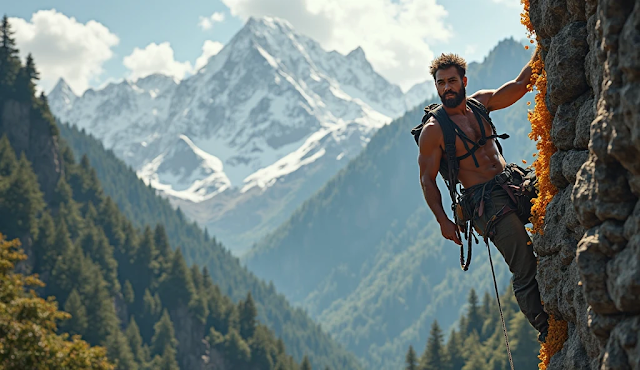Discover Kathmandu, Nepal’s cultural heart, where ancient temples, royal legacies, and UNESCO World Heritage Sites showcase exquisite wood craftsmanship. Dive into its vibrant history!
Introduction: Kathmandu – Where Culture and Heritage Collide
Nestled in the Himalayas, Kathmandu is more than Nepal’s capital—it’s a living museum of culture, spirituality, and artistry. Recognized by UNESCO for its unparalleled heritage, the Kathmandu Valley boasts sacred temples, royal palaces, and intricate wood carvings that tell stories of dynasties, deities, and craftsmanship spanning millennia. This guide uncovers the city’s soul, from its legendary kings to the iconic Kasthamandap temple, whose wooden grandeur gave the city its name.
1. Kathmandu’s Royal Legacy: Kings Who Shaped a Civilization
Kathmandu’s history is intertwined with the Malla and Shah dynasties, whose rulers transformed the valley into a hub of art and architecture.
The Malla Dynasty (12th–18th Century): Visionary kings like Pratap Malla commissioned iconic landmarks, including Kathmandu Durbar Square’s Hanuman Dhoka Palace and the Taleju Temple. Their patronage of arts fostered Newari craftsmanship, evident in pagoda-style temples and ornate woodwork.
The Shah Dynasty (1768–2008): Unifying Nepal, King Prithvi Narayan Shah made Kathmandu the capital. His successors preserved the valley’s heritage, blending Hindu and Buddhist traditions into its urban fabric.
Pro Tip: Visit the King’s Palace Museum in Hanuman Dhoka to glimpse royal artifacts and coronation rituals.
2. UNESCO World Heritage Sites: The Crown Jewels of Kathmandu Valley
In 1979, UNESCO designated seven sites in the Kathmandu Valley as World Heritage Sites. These landmarks embody Nepal’s spiritual and architectural genius.
A. Kathmandu Durbar Square
The historic seat of kings, this square features:
Kumari Ghar: Home to the living goddess Kumari, a symbol of divine femininity.
Kal Bhairav: A fearsome stone statue of Shiva, revered since the Licchavi era.
Wooden Wonders: The nine-story Basantapur Tower and Kasthamandap (built from a single Sal tree) highlight Newari carpentry.
B. Patan Durbar Square
A masterpiece of Newari architecture:
Krishna Mandir: A stone temple dedicated to Lord Krishna, adorned with carvings from the Mahabharata.
Golden Temple (Hiranya Varna Mahavihar): A Buddhist monastery covered in gold plates.
C. Bhaktapur Durbar Square
55-Window Palace: A royal residence with intricately carved peacock windows.
Nyatapola Temple: A five-story pagoda guarded by stone wrestlers and elephants.
D. Swayambhunath Stupa
The “Monkey Temple” offers panoramic views and symbolizes enlightenment. Its all-seeing Buddha eyes gaze over the valley.
E. Boudhanath Stupa
One of the largest spherical stupas globally, this pilgrimage site buzzes with Tibetan Buddhist rituals.
F. Pashupatinath Temple
A sacred Hindu complex along the Bagmati River, where cremation ghats and sadhus (holy men) embody cycles of life and death.
G. Changu Narayan Temple
Dedicated to Vishnu, this 5th-century temple is the valley’s oldest, with stone inscriptions and roof struts depicting deities.
3. The Art of Wood: Craftsmanship That Defines Kathmandu
Newari artisans elevated woodcarving to a spiritual practice. Their techniques, passed down through generations, adorn temples with symbolic motifs.
A. Sacred Symbolism in Carvings
Peacock Windows (Bhaktapur): Represent wisdom and protection, with feathers carved in exquisite detail.
Tantric Deities: Fierce guardian figures on temple struts ward off evil.
Lotus and Serpent Motifs: Symbolize purity and cosmic energy.
B. Iconic Wooden Structures
Kasthamandap: Legend claims this 12th-century pavilion was built from a single tree. It once hosted travelers and festivals.
Dattatreya Square (Bhaktapur): The Dattatreya Temple features carvings of Hindu trinity gods (Brahma, Vishnu, Shiva).
Did You Know? After the 2015 earthquake, local artisans used traditional methods to restore collapsed temples, preserving historical authenticity.
4. Living Culture: Festivals and Traditions
Kathmandu’s heritage thrives in its festivals:
Indra Jatra: A masked dance festival honoring the rain god Indra, where the Kumari blesses the king (historically).
Dashain: Nepal’s longest festival celebrates victory of good over evil with temple offerings and family reunions.
Bisket Jatra (Bhaktapur): A New Year festival featuring a towering chariot procession and tug-of-war ritual.
Local Insight: Join a guided heritage walk to witness daily rituals, from morning puja (prayers) at Pashupatinath to butter lamp ceremonies at Boudhanath.
5. Preserving the Past: Challenges and Efforts
Urbanization and earthquakes threaten Kathmandu’s heritage. The 2015 quake damaged over 750 historic sites. However, restoration projects led by UNESCO and local communities are rebuilding landmarks using original materials and techniques. Travelers can support preservation by:
Hiring local guides.
Donating to vetted heritage NGOs.
Respecting temple rules (e.g., no leather in Hindu shrines).
6. Visiting Kathmandu: A Traveler’s Guide
Best Time to Visit: October–December (clear skies for Himalayan views).
Must-Try Experiences:
Sunrise at Swayambhunath.
Woodcarving workshops in Patan.
Street food tour in Bhaktapur (try Juju Dhau, king curd).
Sustainable Tips: Avoid plastic, haggle respectfully, and dress modestly at religious sites.
Conclusion: Kathmandu – A Timeless Journey
Kathmandu is not just a city but a testament to human creativity and resilience. From the silent whispers of ancient temples to the vibrant pulse of its festivals, it invites travelers to step into a world where history is alive. As UNESCO rightly declared, this valley is a “cultural and urban masterpiece”—one that continues to inspire awe, reverence, and wonder.
Call to Action: Ready to explore Kathmandu? Share your favorite heritage spot in the comments or tag us in your UNESCO journey photos!





.jpeg)
.jpeg)
.jpeg)





0 Comments